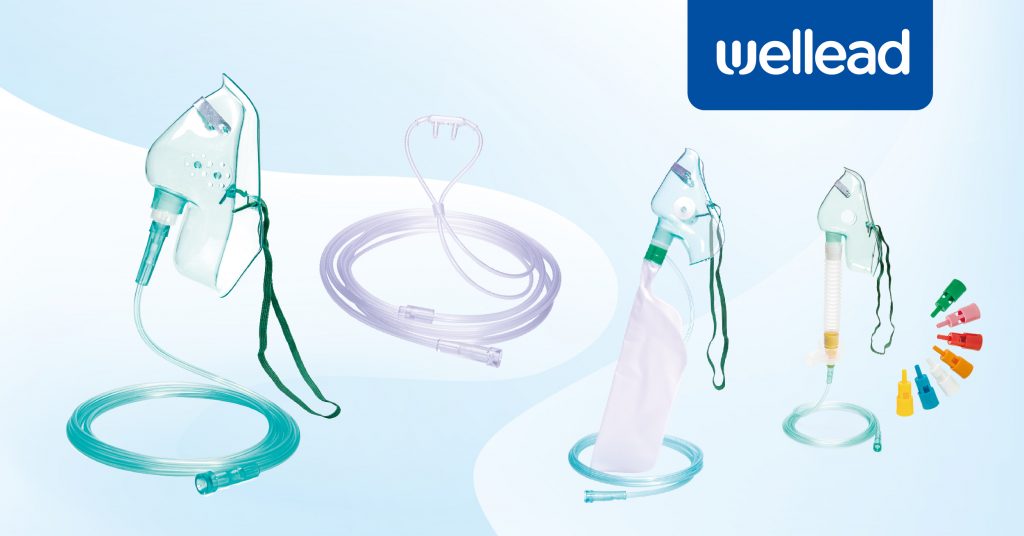Oxygen therapy is a therapeutic treatment that ensures the delivery of supplemental oxygen in addition to the oxygen present in the surrounding air. This treatment allows the patient to get enough oxygen when their body is unable to do so independently. It mainly includes the delivery of oxygen in liquid or gaseous forms, among other types, preferably using medical oxygen masks.
This blog aims to provide readers with a comprehensive guide on oxygen therapy and the tools used to deliver it. We will explore the details of oxygen therapy and the oxygen delivery equipment, providing insightful information for interested readers.

Who Needs Oxygen Therapy?
Typically, the oxygen levels in our arterial blood are between 75-100mmHg (millimeters of mercury). If these levels fall to 60 mmHg or lower, it’s a sign you may require supplemental oxygen. Moreover, high levels of oxygen can also potentially damage the cells in your lungs.
Therefore, oxygen levels should ideally not exceed 110 mmHg. In terms of saturation, a healthy oxygen level is 95% or higher, and it can be measured by pulse oximeter, lung function test (LFT), or arterial blood gas test (ABG). Oxygen therapy is prescribed when these levels drop below 88%.
Some lung conditions prevent the lungs from absorbing and filtering enough air, which results in insufficient oxygen supply to different cells, tissues, and organs. These conditions mainly include:
- COVID-19
- Chronic Obstructive Pulmonary Disease (COPD)
- Asthma, Bronchitis, Emphysema
- Pneumonia
- Lung Cancer
- Bronchopulmonary Dysplasia
- Underdeveloped lungs in new-borns
- Pulmonary Fibrosis
- Cystic Fibrosis
- Heart Failure
In these conditions, oxygen is delivered through different kinds of oxygen masks. Some people need supplemental oxygen permanently, and some may need it occasionally.
What Are the Signs of Hypoxia of Oxygen Therapy?
Sometimes, due to some pulmonary disorders, your lungs cannot extract oxygen efficiently from the inhaled air, in which case hypoxia occurs. Prolonged hypoxia can lead to irreversible organ damage or organ failure. This condition must be immediately treated with oxygen therapy, usually done by using medical oxygen masks.
Following are some common symptoms associated with hypoxia:
- Headache
- Shortness of breath
- Rapid heart rate
- Bluish skin, lips, or fingernails
- Confusion
- Coughing
- Wheezing
- Fatigue
- Sweating
What Are the Different Types of Oxygen Delivery Equipment?
Oxygen therapy is a diverse field with a wide range of delivery methods specifically customized to meet the demands of patients. Some of the common oxygen delivery equipment types are discussed below:
1. Nasal Cannula
The nasal cannula mainly consists of plastic tubes with two short prongs that are placed in the nostrils and supply oxygen either directly from a flow meter or via humidified air. This oxygen delivery equipment is often used for stable patients needing low amounts of oxygen and can not interfere with the patient’s daily meals and interactions.
2. Simple Face Mask
This simple face mask for oxygen is a common medical oxygen mask in hospital units and is designed to fit over the patient’s mouth and nose and supply a higher amount of oxygen. The turn-up rim, elastic strap, and adjustable nose clip affect the fit of the mask, which in turn influences the efficiency of oxygen delivery.
3. Non-Rebreather Mask
This medical oxygen mask has a one-way valve between the reservoir bag and facemask to prevent exhaled breaths from reentering the reservoir. Additionally, it also has two one-way flutter valves on the exhalation port of the facemask to prevent the mixing of room air with the delivered oxygen. These features aid the patient in breathing highly concentrated oxygen (FiO2) and are used in emergencies.
4. Venturi Mask
A Venturi mask is a cone-shaped device and features ports of different sizes at its base for entrainment. The entrainment ports allow the adjustment of oxygen concentrations and provide more precise oxygen therapy to the patient. Known for its superior controllability, it also serves as an effective option for individuals in need of respiratory support.
The significance of these oxygen delivery devices for oxygen therapy is undeniable. These are the vital tools in healthcare settings that allow the safe administration of oxygen, thereby enhancing the patient’s health and overall quality of life.
Why Well Lead to Supply Oxygen Mask?

As we conclude our guide on oxygen therapy and its delivery equipment, especially medical oxygen masks, it’s worth highlighting the contributions of reliable manufacturers in this field, such as Well Lead Medical.
Established in 1998, Well Lead Medical has become a leading global manufacturer of medical devices in China. Well Lead Medical specializes in main medical catheters, and the products have been sold to more than 96 countries and regions. One such exceptionally performing product is the Well Lead Medical Oxygen Masks. With rigorous inspection to meet market standards, we offer oxygen masks and other medical devices with reliable quality and exceptional deliverability. These exceptional features make them a reliable choice for oxygen therapy. At Well Lead Medical, we believe that the quality of every medical device represents a commitment to patient health and safety, and that’s what we have and continue to innovate to foster a healthier future for all.

